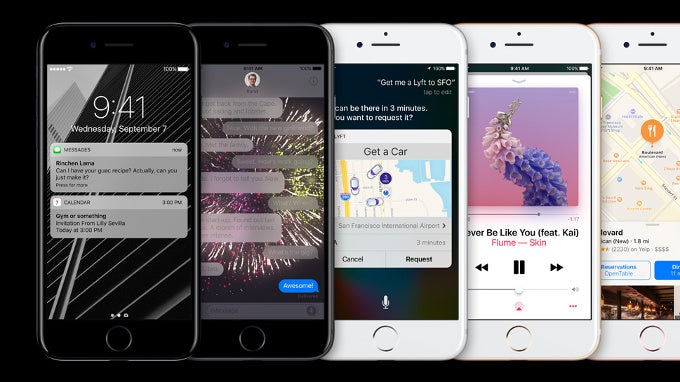Here is one likely reason why Apple removed the physical Home button in the iPhone 7

Apple has removed one of the hallmark features of the iPhone in the latest iPhone 7 and 7 Plus, and no, we're not even talking about the audio jack. The physical home key, one of the most recognizable elements of an iPhone, is no longer there, at least not in the form it used to be.
What you'll find on the iPhone 7 and iPhone 7 Plus instead is a solid, capacitive button that does not actually physically travel: instead, Apple uses its novel vibration motor that it calls the 'Taptic Engine' to create a click-like sensation every time you press this new button. However, rather than fully mimic the click of the physical button, this new feedback creates a feeling as if the whole bottom part of the phone is vibrating and many users are complaining that it just does not feel as good as before. You can also now adjust the strength of this feedback (with a choice of 1 to 3 for the intensity of the vibration), but neither option is able to fully simulate the clicking of an actual physical key.
So why did Apple do it?
A lie repeated a thousand times becomes the truth
It turns out that millions of people never use the physical keys on their iPhones for a crazy reason: a wide-spread belief that the button breaks. In fact, in most of Asia and other nations like Brazil, people use their iPhones with the help of a floating button on the screen that is used as a complete replacement for the home button. The feature called AssistiveTouch is hidden deep in the menus and is designed for users with a disability who have a difficulty to actually press a physical button. Contrary to its original design, though, it's used for a whole different reason: to prevent the wear and tear of the physical key. This way when someone decides to sell their iPhone, they can do so at the best price.
For many used to the click of a button, this could feel like a downgrade
Of course, nothing could be further away from the truth than the claim that iPhone's home button breaks easily: in fact, it's been tested to withstand long years of use and abuse. So where does this come from? The origins are rooted in an early batch of iPhones way before Touch ID even existed that did have such a problem. That problem, long ago fixed, has stood like the ghost of the past over the use of the modern Touch ID button and the lie about its breakability repeated a thousand times has convinced millions of users to never use the physical key on their phones.Interestingly enough, it's also said that in many countries sales reps are even setting up new iPhones and enabling the function for users, which goes to show how widespread this is.

At the end of the day, it seems that a simple misconception that has changed the way millions use their iPhones has been at least one of the reasons why Apple switched to this new capacitive buton. For those used to the reassuring click and travel of the physical key, this will be a downgrade rather than an upgrade, but for millions of others, it might mean they get to finally use their iPhone in a proper and more enjoyable way.
Follow us on Google News














Things that are NOT allowed:
To help keep our community safe and free from spam, we apply temporary limits to newly created accounts: